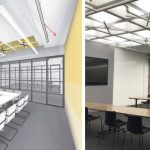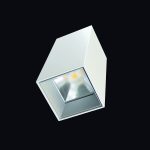4 Ways to Measure the ROI on Lighting
The lighting in a space is one of the first things people notice when they walk in. It’s critical that a space has the “right light.” The light sets the mood for the space and directs people where to go and encourages the desired behavior.
In a store, it directs people to high-margin departments and puts merchandise in the best light. In an office, the light signals “this is where work gets done,” and should stimulate productivity. In a restaurant, the light is typically warm, to create a comfortable and inviting space.
But there’s something else that lighting throws off that isn’t obvious: return on investment (ROI).
Good lighting makes a significant impact on an organization’s bottom line. There are several ways to measure light’s ROI. They are not always compatible with each other, so it is important to decide what an organization’s ultimate goal is to properly measure the ROI of the light. Four metrics to look at when determining the ROI of light in a space are energy savings, maintenance savings, new capabilities lighting enables and enhanced worker productivity.
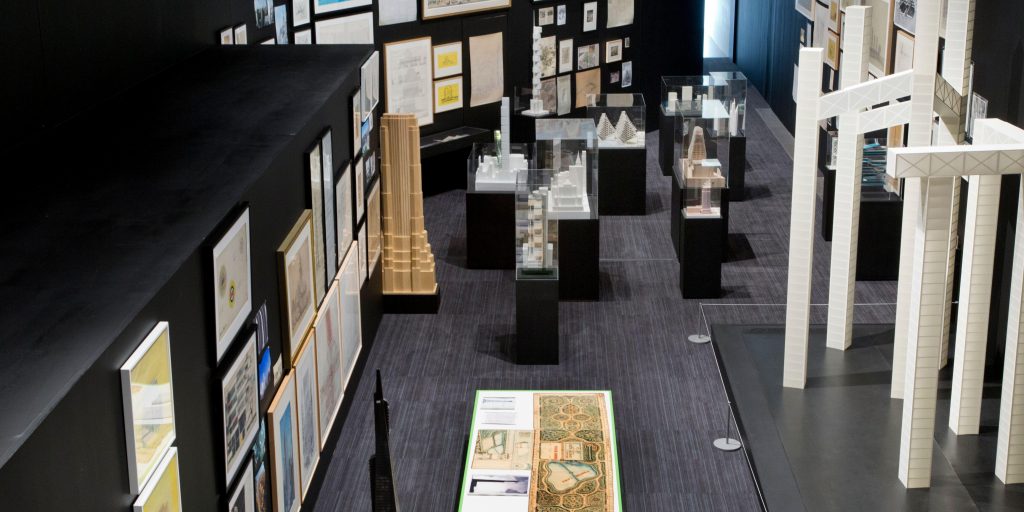
Above: The Queens Museum in New York City was able to put on their special “Never Built New York” exhibit thanks to new LED lighting. Lighting can open up whole new functionalities for a space, enabling new uses for spaces.
The “Possibility” Factor
Sometimes a lighting upgrade allows for new things that weren’t viable before. This is the “possibility” factor—is it possible to do X now? A space’s new capabilities can really improve a building’s performance. Whether it’s increasing retail floor space or facilitating office collaboration, this can have a tremendous impact on an organization’s bottom line too.
What does the possibility factor look like in real life?
For six months in 2017 and 2018, the Queens Museum held an exhibition called “Never Built New York.” Focusing on the New York City that could have been, the museum displayed models and plans for infrastructure projects that were proposed but never built.
Because the museum upgraded their old halogen lights to a new LED track system, the curators were able to leverage a room that was somewhat Manhattan-shaped for the exhibit. The curators arranged the displays in the room where they actually would have been built in Manhattan.
Many of the works on display were fragile and had strict light requirements to preserve them. With the old lights, these delicate works would have had to be grouped together. With the new LEDs, the museum could arrange the displays thematically in a creative way, rather than grouping items by lighting requirements. (See the full Queens Museum case study for more)
Enhanced Productivity
Improving employee productivity has enormous potential to impact an organization’s bottom line. How valuable is it? Enough that moving the productivity needle a wee bit can deliver larger gains than other popular cost savings, such as energy efficiency initiatives or reducing rent.
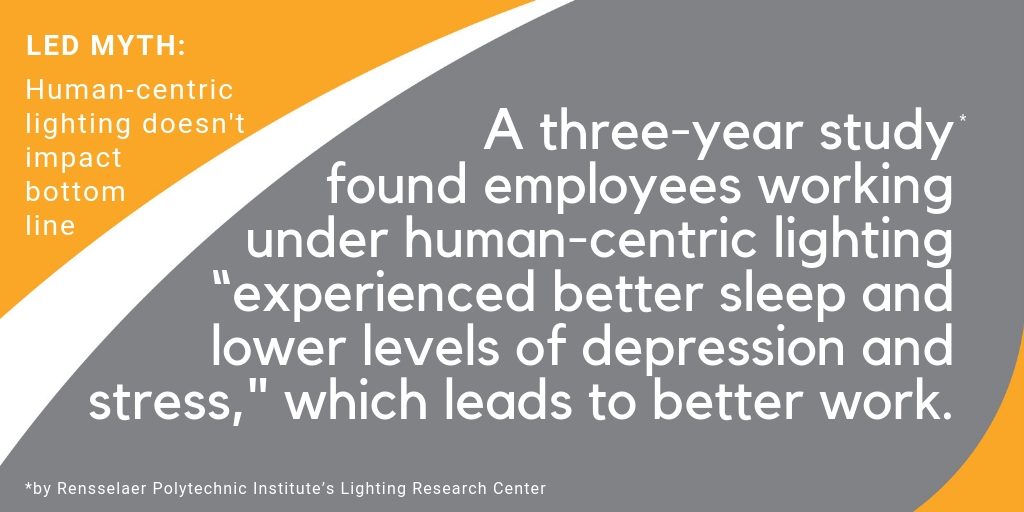
Based on JLL’s famous 3/30/300 rule, here’s the value of productivity: In general, organizational expenses per square foot (annually) break down with $3 for utilities, $30 for rent/mortgage and $300 for payroll.
The average commercial building is a little over 15,000 square feet (as per the US Energy Information Administration). Using the 3/30/300 proportions, the annual spending for a business in an average building should roughly break down to $45,000 on utilities, $450,000 on rent and $4,500,000 on employees. (The total amount adds up to $4,995,000).
Reducing utility costs by 50 percent saves this company $22,500 annually. Improve space utilization by 10 percent and they save $45,000. Increase employee productivity by 5 percent and the company saves $225,000.
A small change in the employee category can have an enormous impact on a company’s bottom line. That is why designing a project’s lighting around the end user’s productivity is important.
Lighting has a huge impact on how we do our jobs—from the base level of ensuring we can see what we’re doing to boosting mood and cognitive function.
We often spend most of our awake time indoors at work, making offices perfect places for human-centric lighting solutions. In addition to delivering general light to see, workplace lighting affects employee alertness, mood, focus, sleep-wake pattern and overall health. The research bears this out:
Rensselaer Polytechnic Institute’s Lighting Research Center conducted a study of human-centric lighting in five government office buildings across the United States. The three-year study found employees working under human-centric lighting “experienced better sleep and lower levels of depression and stress,” than those who didn’t. They were also able to fall asleep more quickly at bedtime and experienced better-quality sleep.
It’s not exactly news that healthier employees can work harder and smarter than unhealthy ones. Study after study has demonstrated this effect.
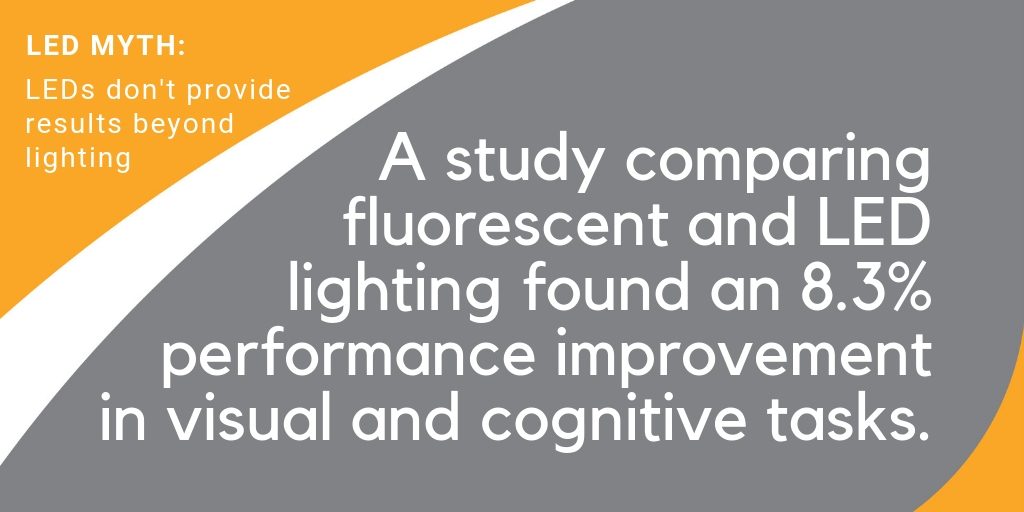
Energy efficiency
By far the most common metric touted for LEDs is their extreme energy efficiency. We’ve all heard how they outperform conventional light sources by orders of magnitude. The stats are impressive:
- Los Angeles trimmed electrical costs by 75 percent when it upgraded the decorative streetlights to LEDs. (Read the complete case study.)
- The Queens Museum in New York City slashed lighting costs by 90 percent when it upgraded the old halogen gallery lights to a modern LED solution. (Read the complete case study.)
Energy savings can go a long way towards quickly realizing full ROI on a lighting investment. To incentivize these kinds of dramatic savings, many utilities and government entities offer rebates and incentives for organizations installing energy-efficient lighting.
For example, in a Boston office project, the lighting designer on the project—Lam Partners—devised a lighting scheme that leveraged indirect light fixtures to illuminate an open-concept office. This design fell under the local requirements of watts per square foot, netting the client a $7,200 incentive from the utility company. (See the full case study here.)
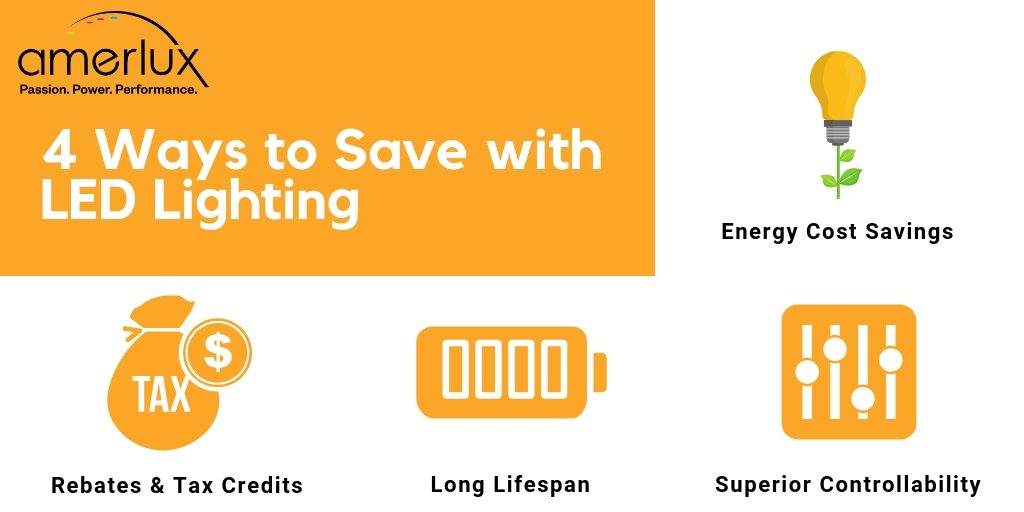
Maintenance Savings
Frequently left out of lighting ROI calculations are the maintenance savings that LEDs deliver. Legacy lights burn out quickly, necessitating replacement. LEDs typically deliver 50,000 to 70,000 hours of high-quality light. This is about 50 times longer than an incandescent bulb, 20-25 times longer than a halogen lamp and 8-10 times longer than a CFL bulb.
Paying maintenance staff to relamp fixtures gets pricy quickly. Beyond direct labor costs, relamping may require temporarily closing a portion of a facility or paying overtime for the workers to do the work at night. Equipment costs can include lifts for high ceiling applications.
An LED upgrade eliminates most of these maintenance costs, further improving direct ROI.
Light is more than light. It’s an investment and, like all investments, its impact is measurable. By looking at the whole picture, organizations can make informed decisions about the ROI of lighting.
Amerlux has been developing innovative lighting solutions to power commercial buildings for decades. Their lights illuminate cities and offices all over the world. Learn more here.
